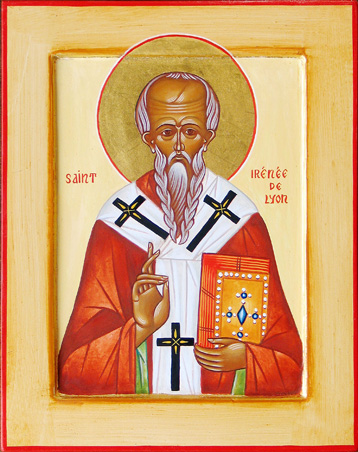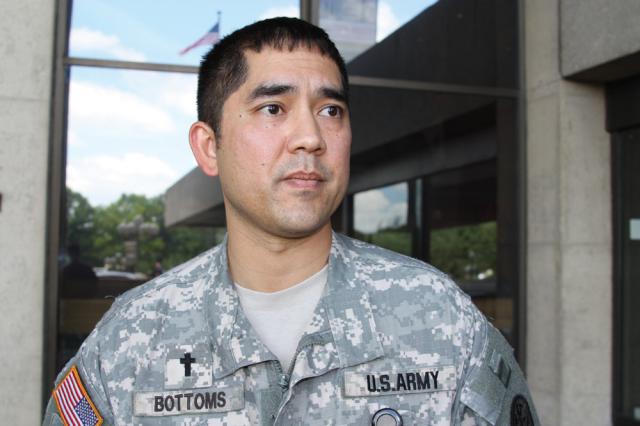 I was stunned the other day by the total lack of interest in the religion elements of the big story here in Washington, D.C., as in the tragedy on our Metro subway system. The coverage has been major league, as you would expect, and the story on which I focused was one out of many worthy of discussion.
(Sound of crickets on a still night)
I was stunned the other day by the total lack of interest in the religion elements of the big story here in Washington, D.C., as in the tragedy on our Metro subway system. The coverage has been major league, as you would expect, and the story on which I focused was one out of many worthy of discussion.
(Sound of crickets on a still night)
OK, I don't care.
I'm going to write about this subject again, because the Washington Post had a follow-up story the other day that was simply baptized in religious themes and images, for a totally valid, journalistic reason. You see, one of the survivors from that first Metro car, the one that was crushed to one third its size, was -- wait for it -- was a military chaplain with two tours worth of experience in Iraq. He was in the wrong place at the right time.
In the end, the Post turned Car 1079 into a kind of urban version of "The Bridge of San Luis Rey." Who was in that car at the crucial moment, when it was "Three Minutes to Fort Totten"?
I do have a few questions, however.
With this kind of anecdotal story, any feature writer has to ask two questions right up front: (1) What's the symbolic story that gives me a lede? And (2) What's the over-arching principle that provides the structure (and how does the lede fit into that)?
Now, it's clear to me that Dave Bottoms, the chaplain who has just arrived at Walter Reed Army Medical Center, provides most of the information and insights that provide the structure of the story. Yet, the lede starts somewhere else, with Tom Baker, a doctor, and the last man to step onto the train before the doors closed and it began its short, final trip. I understand that choice. Yet I also wonder if leading with the chaplain was, oh, too religious? Did the editorial team conclude that this would be too focused on the faith element of the story?
I could pick many different passages from this story demonstrating that writer Eli Saslow "gets it," in terms of the faith element that was already in this story. But let's start with the introduction of Bottoms:
In the far rear of the car, Dave Bottoms listened to an iPod. A chaplain who had just finished his first day on the pastoral staff at Walter Reed Army Medical Center, Bottoms, 39, felt scattered from the stress of a new job. Wasn't today his dog's seventh birthday? Did his new BlackBerry work? Were there any leftovers in the fridge for a quick dinner? Bottoms reached into his backpack and grabbed a photocopy of a homily by St. Irenaeus. Maybe, Bottoms thought, a little reading would quiet his mind.
Baker stopped walking when he reached the chaplain and stood near him, leaning against a wall by the rear exit of the first car. Baker had moved from Texas to Washington four years ago, bought a downtown condo and sold his car. So liberating. He loved the predictability of Metro. It was 4:57 p.m., and Train 112 lurched into motion, with Car 1079 at the lead. Baker grabbed a pole to steady himself and turned to face the door he planned to use to exit the train. He would make it to the gym by 5:45, probably home by 7:30. A good night ahead. Three minutes to Fort Totten.
After the crash, Bottoms does what you would expect a chaplain with battlefield experience to do -- he comforts the injured and the dying.
A writer doesn't have to add drama to this kind of story. It also helps, of course, to be interviewing someone (most clergy are amazing, trust me) who is used to hearing people describe their lives, their emotions, their feelings -- even at the moment of death.
When he was training, we are told, a mentor gave Bottoms this motto: "You don't let anyone suffer alone."
 This is the real thing. The quote is long, yes, but where would you cut it?
This is the real thing. The quote is long, yes, but where would you cut it?
The chaplain leaned over, his face inches from the top of the debris, and spoke into the darkness. He said the first thing that came to his mind.
"We can pray," he said.
"Okay," she said.
Bottoms spoke the Lord's Prayer. He had recited it thousands of times, but its six simple sentences still resonated within him. "Our father, who art in heaven, hallowed be thy name," he said. "Thy Kingdom come, thy will be done, on earth as it is in heaven."
There was familiarity and comfort in those opening lines. Only an hour earlier, Bottoms had visited and prayed with about a dozen injured patients at Walter Reed, a part of his daily routine. He believed that prayer fortified the injured and pacified the dying. During a year in Iraq, he had watched over a three-bed medical clinic that sometimes overflowed with 30 patients, and those experiences returned to him in the train car: dying soldiers to whom he had administered last rites; a badly burned Iraqi man who died on the street in Bottoms's lap.
Bottoms was an Army brat from birth, trained for trauma. In Car 1079, his voice remained steady and calm.
The young woman's voice pitched and trembled. She had graduated from Largo High School in 2003, tried a few years of college in Ohio and then returned home to attend beauty school. Her mother did hair, so she decided to do hair. Fashionable and girlish, she had compiled so many outfits that she kept one closet filled with unworn garments that still bore their tags.
"Please," she said now. "I'm dying."
"You're not alone," Bottoms said. "What's your name?"
"LaVonda," he said. He wanted to write it down. Another passenger handed him paper and a pen.
"Can you spell it?" he asked.
"L-a-v-o-n-d-a," she said.
"Okay. Great. And what's your last name?"
She moaned, so Bottoms repeated his question. On the second try, LaVonda King tried to spell out her last name, but her reply was sporadic, and her voice was quieter. Bottoms wrote down K-L-I-N-G on his piece of paper, adding an extra letter. "Okay," he said. "Good."
From his perch against the wall and on top of a pile of rubble, Bottoms looked out the window and spotted a police officer standing across the train tracks. Bottoms banged hard against the glass, quick jabs with the side of his fist, but the police officer walked in the opposite direction. Bottoms banged one final time in frustration. Why couldn't the officer hear him? LaVonda King was only moaning now.
"Hold on, LaVonda," Bottoms said.
He had been told once in Iraq that hearing was the last of the senses to fail before death, and he remembered that now. Maybe, somewhere beneath the chairs, carpeting and glass, LaVonda was still listening. Maybe she could hear him, even now.
"LaVonda, are you bleeding?"
No reply.
"Keep talking to me, LaVonda."
No reply.
"LaVonda."
Nothing.
Bottoms looked behind him at what remained of Car 1079. Baker was comforting the 15-year-old boy with a trapped leg while the young architect looked on. Everyone else had exited. Bottoms looked back down into the pile.
"LaVonda," he said. "I'm still right here."
That scene is the heart of this story, as you will see when you read the whole feature (and I hope that you do).
After I finished, another question hit me. If this man is a chaplain, should his name be the Rev. Dave Bottoms? Or would his U.S. Army rank trump the religious title? That led to another question: He's reading a sermon by a great saint, one of the most famous defenders of Christian orthodoxy who has ever lived. What kind of chaplain reads St. Irenaeus on the Metro?
So I did what any reporter would do -- I looked him up in Google. As it turns out, Bottoms is an Anglican. Thus, it's possible that the reporter should have called him Father Dave Bottoms. Was he wearing clerical clothing on the Metro? There is a chance that the "Anglican" reference, as opposed to "Episcopal," means that he is an evangelical or Anglo-Catholic who is now in an alternative Anglican church. As a simple matter of Associate Press style, I think he needed to be identified in some way. Right?
But to return to my main point: This is another fine example of letting the faith element of a story shine through. The faith details are not forced. There is no need for that. The faith details are right where they should be -- at the heart of a stunning, tragic, deeply spiritual moment in the lives of ordinary people. Amen.
Photo: By Sharon Renee Taylor at www.Army.mil
